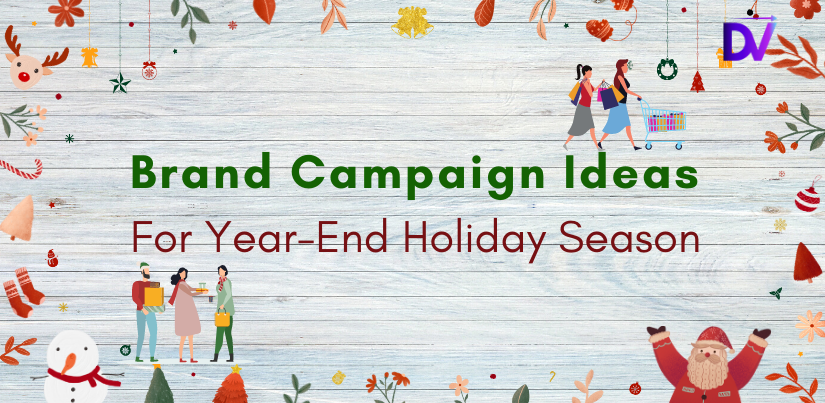Festive Spirit: How Can Brands Benefit From The Festive Season
Our country’s fabric is woven with religious and cultural festivals. They are filled with joy, devotion, cultural attire, food, and music. People are looking forward to celebrating them with family and loved ones, especially after two quiet years due to COVID. Festivals provide marketers with a unique opportunity to connect with existing and potential customers.
During festivals, an effective marketing strategy to targeted demographics improves the brand image, builds an emotional connection with the consumer, and increases sales. A festival marketing strategy should capture the spirit of the event.
A brand must demonstrate how it captures the essence of the festivities, whether through music, changing seasons, or other factors.
Festival marketing strategies have evolved as a result of the unique themes and innovations that connect the brand with the culture.
Companies have been launching cultural festivals as brand property in recent years. Music, arts, and theatre festivals are a few examples. A link to the brand’s DNA is also explored here; for example, a spice brand can launch an annual food festival.
Marketing In The Festival Clutter
The peak festive period of Dussehra-Durga Puja-Diwali has started with full fervor. And preparations are underway to woo consumers with various promotional strategies.
Our understanding of the festive season does not end with Diwali. But extends across our dominant cultural boundaries, incorporating Western festive concepts. Such as Thanksgiving, Black Friday, and Cyber Monday leading up to Merry Christmas.
Harvest-based festivals such as Lohri, Pongal, Makar Sankranti, and Magh Bihu present additional smaller pockets of opportunities for festive shopping in January. Not surprisingly, Republic Day has also become a major shopping holiday. In addition to these, regional markets see an increase in shopping during Holi and Poila Boishakh/Rongali Bihu.
On top of that, e-commerce platforms extend the sale season all year with contextual thematic offers. With two years of Covid disruptions dampening the market’s festive spirit, this year is bringing in high levels of brand spending.
With that in mind, here are some effective ways to develop a marketing plan for festivals.
Local Marketing
Many festivals are held in the streets, parks, and neighborhoods, with local communities and associations pitching in to ensure their success. Earlier festival marketing plans included partnering with local organizations for an effective on-site presence. Companies now sponsor them and display logos and promotional materials at festive events. This aids in the promotion of their brand name in advertisements and digital content to achieve the desired traction. Photographs from the celebrations are also used to raise awareness on social media platforms.
Making Use of Contests & Promotions
Festivals have been actively used by brands to launch contests and promotions centered on the festival’s theme. Festivals are a time for many shoppers to go shopping. Such as Onam in Kerela tend to be a barometer of consumer sentiments, with spending encouraging brands setting the stage for frenetic bouts of promotional activity.
According to a 2021 survey, 94% of respondents are excited to shop during the holiday season, up from 80% last year. Apparel, mobile phones, home appliances, and electronics were among the categories. A festive marketing strategy propels sales growth in 2022, as an increase in spending helps businesses meet their estimated revenue targets. These promotions can be online or offline, depending on the target audience, and can include limited-time offers, holiday discounts, combos, and gifts.
Leverage Online Activities
The use of social media and the internet in recent years has altered both consumer behavior and business operations. Organizations now have a plethora of options, because social and digital marketing activities are more cost-effective, resulting in increased brand recognition and sales.
In holiday marketing plans, online marketing initiatives are prioritized. Content that connects festivals to brands is leveraged through keyword optimization and targeted digital ads. Customers are advised on the best ways to celebrate festivals, including how to decorate their homes, how to dress, where to dine, what to gift their family and friends, and so on.
Digital marketing has transformed festive marketing; this is a medium through which brands communicate their festive spirit with images and videos via social media posts that include unique and trending hashtags. Companies also redesign their websites during the festival period to reflect the festival’s colors and icons.
Region-Specific Marketing
In a country as diverse as India, it is critical to recognize that one size does not fit all. Focused regional marketing, particularly during important local festivals, assists brands in connecting with a specific demographic. Campaigns that create tasteful, aesthetic, and authentic regional campaigns are successful. To ensure proper amplification and outreach, the campaign should be supplemented with an appropriate media plan.
To Conclude On A Festive Note
Festivals provide an excellent opportunity for brands to create experiences that consumers enjoy. These could be age-old cultural festivals that have been given a new spin by a brand-new campaign. Festive marketing strategies have evolved, and brands now prioritize consumer sentiment. The brand has reminded consumers of its role in their lives through events, promotions, and other activities, resulting in increased awareness, recall, engagement, and loyalty.
Let The Festivities Begin!!







